1 of 26

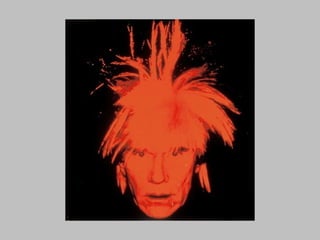
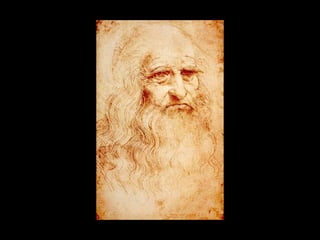

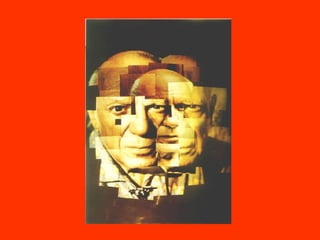
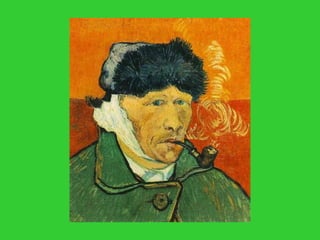
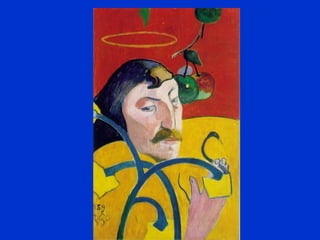
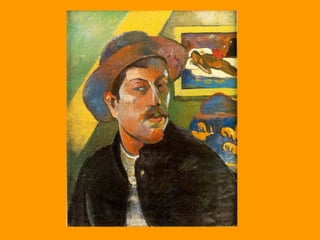
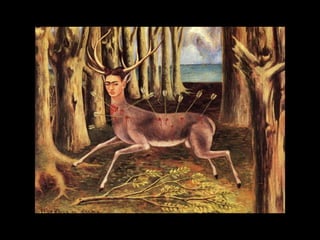
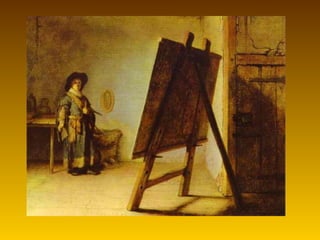
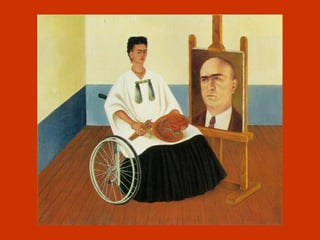

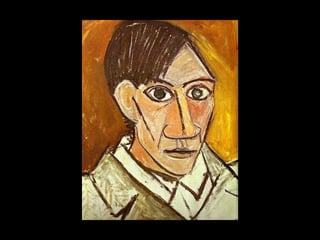


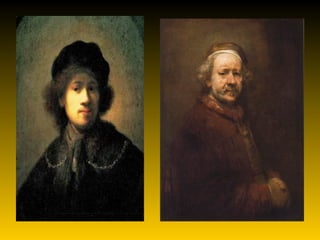
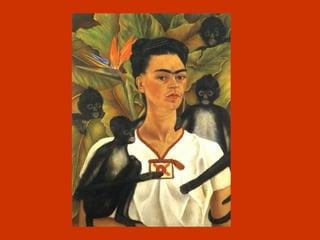
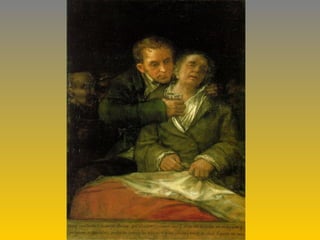
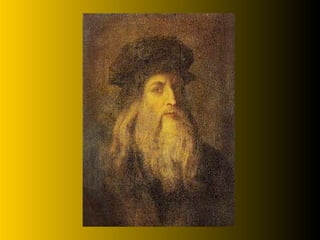

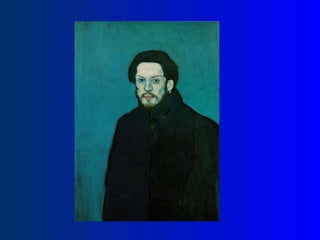
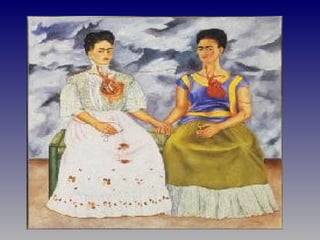

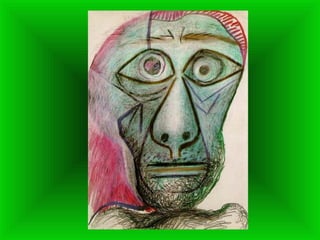

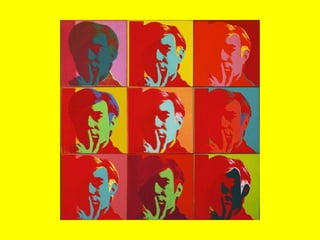
Ad
Recommended
Georgia o'keefe ppt
Georgia o'keefe pptcisenberg2
╠²
Georgia O'Keeffe was an American abstract painter known for her large-scale paintings of flowers, shells, animal bones, and New Mexico landscapes. She simplified and magnified natural forms using bright colors and close-up perspectives to encourage viewers to notice details they normally overlooked. Her most famous works featured abstracted flower paintings. O'Keeffe divided her time between New York City and rural New Mexico, drawing inspiration from both urban and desert environments.GEORGIA O' KEEFFE
GEORGIA O' KEEFFEbanares
╠²
Georgia O'Keeffe was an American artist born in 1887 in Wisconsin. She showed an early interest in art and decided by age 10 that she wanted to be an artist. She studied art in Chicago and New York and her early works were abstract paintings. O'Keeffe is known for her large-format paintings of flowers, New York cityscapes, and objects from the New Mexico landscape like bones and rocks, which she featured after spending time there beginning in the 1920s. She lived much of her later life in New Mexico, where she died in 1986 at the age of 98.Okeeffe.Ppt
Okeeffe.PptDuniway
╠²
Georgia O'Keeffe was an American artist who painted over 900 works throughout her 98-year life. She was inspired by nature, which became the subject of all her artworks. As a child in Wisconsin, she showed an early interest in art despite women not being encouraged to pursue it at the time. Her art teacher sparked her attention to detail by having the class examine a wildflower up close. O'Keeffe became famous for her paintings of natural objects like flowers, doing a series on jack-in-the-pulpit. In the 1920s, she began painting giant flowers that filled the canvas and made viewers feel small, establishing her unique talent and fame as one of America's most renowned artistsPhotography self portraits PPT
Photography self portraits PPTMartha Anne Kuntz
╠²
The document discusses the personal and cultural value of self-portraits created by artists. It notes that since the 15th century, nearly every artist across different mediums has explored self-portraits as a way to examine their own psyche or simply because they are the most available model. By viewing these self-portraits, viewers can gain insight into how artists see themselves and their different "selves", and better understand their personalities and what they wish to show or hide. The self has long been an important subject in art as it expresses how individuals view themselves while also providing wider cultural insights. Contemporary self-portraits encourage debates around issues like identity and individuality.Introducing the Self Portrait
Introducing the Self Portraittracymargaret
╠²
The document explores the significance of self-portraits by various artists, emphasizing themes of gender stereotypes and emotional expression. It discusses works by Picasso, Frida Kahlo, and Francis Bacon, highlighting how their personal experiences influenced their artistic representation. The text invites reflection on how individuals can choose to depict themselves, considering elements like mood, symbols, and personal history.History of self portraiture
History of self portraitureMatt Coleman
╠²
Artists began creating self-portraits in the 15th century to depict themselves as subjects or important characters in their work. With more accessible mirrors, many painters, sculptors, and printmakers experimented with self-portraiture. Albrecht D├╝rer was one of the first to systematically create self-portraits at different ages over his lifetime, establishing self-portraiture as an artistic genre. Since then, many other notable artists like Rembrandt, Van Gogh, Frida Kahlo, and Lucian Freud have also used self-portraiture to represent themselves at various stages of their lives.Self portraits of famous artists
Self portraits of famous artistsImaginationNation
╠²
The document lists years associated with various artists including Picasso, Van Gogh, Da Vinci, Salvador Dali, Andy Warhol, and others. Dates range from 1512 to 2002, with the majority from the late 19th century through mid 20th century, showing the era of many influential artists covered in a brief chronological listing.Why do artists make self portraits?
Why do artists make self portraits?katymathes
╠²
Artists create self-portraits for several reasons: [1] Traditionally, artists create self-portraits over the course of their careers to represent their physical attributes. [2] Self-portraiture can also announce an artist's place in society or style. [3] Frida Kahlo produced many self-portraits because she was often alone and herself was the subject she knew best.Portrait assignment, step one
Portrait assignment, step onecjoyce104
╠²
This document discusses different approaches that artists have taken to self-portraiture throughout history. Some artists have taken very formal approaches that reveal little about the artist, while others have used self-portraiture to explore emotions or provide psychological insight. Additional approaches include idealizing or dramatizing oneself, incorporating significant objects, depicting oneself as something else, or portraying only a portion of the self. A wide range of styles and levels of expression are seen across the many self-portrait examples provided.Famous artists self portraits
Famous artists self portraitsklangmaack
╠²
The document lists famous artists such as Botticelli, Raphael, Judith Leyster, Da Vinci, Durer, Rembrandt, Van Gogh, Warhol, Picasso, Close and Kahlo. It suggests that these artists created self-portraits that students can learn from as part of a lesson on 2D art self-portraits using pencil drawings.Symbolic Self Portrait Powerpoint
Symbolic Self Portrait PowerpointLaura Johnson
╠²
This document provides instructions for creating a symbolic still life self portrait using a collection of meaningful objects that represent the person. The instructions specify to gather favorite possessions of different sizes, textures, and levels of light and darkness that relate to one's interests and hobbies in order to assemble an arrangement of items symbolizing oneself.Introduction To Portrait Painting Presentation
Introduction To Portrait Painting PresentationFrank Curkovic
╠²
This document discusses how portrait paintings can convey meaning through facial expressions, posture, color, surroundings, and backgrounds. Artists may use swirling backgrounds to represent how they are feeling, or include more than just a face to provide context. Self-portraits allow artists to celebrate events or talents, and can show the artist from different stages of life. Elements like pose, brushwork, color, and background can reveal an artist's character, mood, beliefs, or talents in their own self-portrait. Various examples of portrait paintings are provided.Catherine Morse Self portraits
Catherine Morse Self portraitscmorse2006
╠²
Self-portraits are depictions of the artist him or herself, which have been created since ancient times. They can provide insight into the identity, emotions, and life experiences of the artist. The document discusses self-portraits by several famous artists like Vincent van Gogh, Frida Kahlo, Pablo Picasso, and Francisco Goya, noting how their self-portraits reflected their psychological and cultural influences at different stages in their careers.Famous Paintings
Famous Paintingsbrachsmith
╠²
This document lists and provides brief information about 15 famous paintings including artists and dates. It includes iconic works such as The Starry Night by Van Gogh, Mona Lisa by Da Vinci, The Scream by Munch, American Gothic by Grant Wood, and Campbell's Soup Cans by Andy Warhol. The paintings span from the 15th century to the 20th century and cover prominent artists from various art movements and time periods.Found objects
Found objectsCarla Hinds
╠²
This document provides information about found object art and assemblage art. It discusses artists such as Joseph Cornell and Louise Nevelson who incorporated found everyday objects into their artwork. The document then instructs the reader to create their own found object memory box by combining styles of these artists, using found objects that are meaningful to them, and arranging the objects in a box according to a planned composition and theme. Guidelines are provided on art terms, tips for the project, and requirements.Ib art iwb
Ib art iwbCarla Hinds
╠²
1) The IB Art document outlines requirements for an Investigation Workbook (IWB) used to document artistic research, ideas, and reflections.
2) Students are expected to use the IWB for sketching, writing about art and feelings, providing an overview of their theme, defining vocabulary terms, and documenting museum/gallery visits.
3) The IWB will be scored based on independent, contextual, critical, and visual research, accounting for 40% of the student's total marks.Researching artists
Researching artistsCarla Hinds
╠²
This document provides criteria for evaluating student work researching an artist or style of art that inspires them. It breaks the criteria down into three levels - satisfactory/needs improvement, good, and excellent. For a satisfactory level, the summary would include the title, date, and a decorated border. For a good level, it adds annotation and compares two different styles. For an excellent level, it compares 3-4 styles, includes personal responses and original drawings, and uses media with exceptional skill.Similarities and differences_images_n_artists
Similarities and differences_images_n_artistsCarla Hinds
╠²
The document provides examples of artists and artistic styles that could be used to explore the theme of similarities and differences. Some key points mentioned include:
- Photographers like Diane Arbus and Clarisse d'Arcimoles who investigate twins/families and changes over time.
- Artists like Grayson Perry and Sarah Lucas who mix traditional techniques with controversial modern imagery.
- Sculptors such as Anish Kapoor and Rachel Whiteread who play with scale, negative space, and color.
- The repetitive patterns found in Islamic tiles, African Adrinka symbols, and Russian matryoshka dolls which show both similarities and variations.
The document suggests exploring this theme through comparisons ofUnderstanding abstract art pp
Understanding abstract art ppCarla Hinds
╠²
1) The document discusses the evolution of abstract art from Impressionism to Abstract Expressionism. Impressionism introduced abstraction and focused on capturing light, while Post-Impressionists like Van Gogh and Gauguin expressed more emotion.
2) Wassily Kandinsky was an early pioneer of abstract art in the early 1900s. His work helped usher in movements like Cubism and Surrealism.
3) Abstract Expressionism emerged in the 1940s in New York. Pioneers like Jackson Pollock emphasized the creative process over representations, focusing on how paint interacted with the canvas. This allowed art to directly express unconscious feelings.Optical illusions rob gonsalves
Optical illusions rob gonsalvesCarla Hinds
╠²
Optical illusions use elements like color, light, and patterns to trick the eye. Artist Rob Gonsalves creates paintings that play with optical illusions through abstract shapes and colors that can be interpreted in different ways depending on how the viewer looks at them. His artwork aims to surprise and engage the audience through visual tricks that challenge normal perception.Optical illusions
Optical illusionsCarla Hinds
╠²
This document contains several optical illusions including images that appear to move when viewed from different angles, ambiguous images that can be interpreted in multiple ways, impossible objects, and images designed to trick the eye. The illusions demonstrate how visual perception can be influenced or deceived by the way an image is presented on a 2D surface.What is modern art? Moma presentation
What is modern art? Moma presentationCarla Hinds
╠²
Modern art challenged traditional notions of art by depicting personal experiences through symbolism and dreams rather than realistic representations. Artists like C├®zanne and Picasso broke new ground, with C├®zanne painting from photographs rather than life and Picasso inventing Cubism through fractured planes that obscured settings. These innovations laid the foundation for more abstract art and influenced centuries of advertising through artists like Toulouse-Lautrec who designed posters promoting popular culture in simplified graphic styles.Claude monet history
Claude monet historyCarla Hinds
╠²
Claude Monet was a famous French impressionist painter born in 1840 in Paris. He was initially expected to join the family grocery business but pursued his passion for art instead. One of his mentors, Eugene Boudin, taught him to paint landscapes en plein air using oils. Along with artists like Renoir and Sisley, Monet helped develop the impressionist style of using loose brushstrokes and broken colors to capture light and shadows. Though he struggled financially, Monet married twice and had two sons. He is renowned for his mastery of color and light in landscapes and his role in founding the impressionist movement.Impressionist art
Impressionist artCarla Hinds
╠²
Impressionism began in Paris in the 1860s as artists attempted to capture moments in time through short, thick brush strokes of unmixed paint applied wet-on-wet to depict natural light and shadows. While initially unpopular for its lack of detail, Impressionism gained acceptance by the 1880s and featured artists such as Monet, Renoir, Pissarro, and Sisley painting outdoors. Pointillism developed from Impressionism using dots of pure color instead of brush strokes to create shimmering effects.Social commentary in art
Social commentary in artCarla Hinds
╠²
The document provides examples of artists such as Pablo Picasso, Francisco Goya, Van Gogh, Barbara Krueger, Banksy, Keith Haring, Roger Gordy, and Dorothea Lange who used their art to bring awareness to and make social commentary on important social and political issues. It also discusses the realistic installations of Mark Jenkins that depict homeless people to draw attention to how they are dehumanized, often causing 911 calls. The document encourages the user to create their own social commentary art on topics like poverty, racism, abuse, and environmental issues using various media.The principles of design 2
The principles of design 2Carla Hinds
╠²
The document discusses key principles of design including proportion, balance, emphasis, movement, rhythm, pattern, harmony and unity. It provides examples of how these principles are used in artworks such as depictions of the human body by Leonardo da Vinci demonstrating proportion, self-portraits by Frida Kahlo showing different types of balance, and paintings showing movement including works by Balla, Degas, and Riley. The document examines how an artist guides the viewer's eye across an image.The principles of design 1
The principles of design 1Carla Hinds
╠²
The document discusses the principles of design in art, which are techniques artists use with the elements of art to create compositions. It outlines 11 principles: balance, contrast, emphasis, variety, unity/harmony, proportion, rhythm, movement, pattern, and repetition. Each principle is defined and an example artwork is described to illustrate how that principle is applied.The principles of design show
The principles of design showCarla Hinds
╠²
This document discusses key principles of design including proportion, balance, emphasis, movement, rhythm, pattern, harmony, and unity. It provides examples of how these principles are used in artworks such as depictions of the human body by Leonardo da Vinci, self-portraits by Frida Kahlo demonstrating different types of balance, and paintings showing movement by artists like Edgar Degas and Balla. These design principles and artistic examples help illustrate how elements are arranged both symmetrically and asymmetrically for visual impact.More Related Content
Viewers also liked (7)
Portrait assignment, step one
Portrait assignment, step onecjoyce104
╠²
This document discusses different approaches that artists have taken to self-portraiture throughout history. Some artists have taken very formal approaches that reveal little about the artist, while others have used self-portraiture to explore emotions or provide psychological insight. Additional approaches include idealizing or dramatizing oneself, incorporating significant objects, depicting oneself as something else, or portraying only a portion of the self. A wide range of styles and levels of expression are seen across the many self-portrait examples provided.Famous artists self portraits
Famous artists self portraitsklangmaack
╠²
The document lists famous artists such as Botticelli, Raphael, Judith Leyster, Da Vinci, Durer, Rembrandt, Van Gogh, Warhol, Picasso, Close and Kahlo. It suggests that these artists created self-portraits that students can learn from as part of a lesson on 2D art self-portraits using pencil drawings.Symbolic Self Portrait Powerpoint
Symbolic Self Portrait PowerpointLaura Johnson
╠²
This document provides instructions for creating a symbolic still life self portrait using a collection of meaningful objects that represent the person. The instructions specify to gather favorite possessions of different sizes, textures, and levels of light and darkness that relate to one's interests and hobbies in order to assemble an arrangement of items symbolizing oneself.Introduction To Portrait Painting Presentation
Introduction To Portrait Painting PresentationFrank Curkovic
╠²
This document discusses how portrait paintings can convey meaning through facial expressions, posture, color, surroundings, and backgrounds. Artists may use swirling backgrounds to represent how they are feeling, or include more than just a face to provide context. Self-portraits allow artists to celebrate events or talents, and can show the artist from different stages of life. Elements like pose, brushwork, color, and background can reveal an artist's character, mood, beliefs, or talents in their own self-portrait. Various examples of portrait paintings are provided.Catherine Morse Self portraits
Catherine Morse Self portraitscmorse2006
╠²
Self-portraits are depictions of the artist him or herself, which have been created since ancient times. They can provide insight into the identity, emotions, and life experiences of the artist. The document discusses self-portraits by several famous artists like Vincent van Gogh, Frida Kahlo, Pablo Picasso, and Francisco Goya, noting how their self-portraits reflected their psychological and cultural influences at different stages in their careers.Famous Paintings
Famous Paintingsbrachsmith
╠²
This document lists and provides brief information about 15 famous paintings including artists and dates. It includes iconic works such as The Starry Night by Van Gogh, Mona Lisa by Da Vinci, The Scream by Munch, American Gothic by Grant Wood, and Campbell's Soup Cans by Andy Warhol. The paintings span from the 15th century to the 20th century and cover prominent artists from various art movements and time periods.More from Carla Hinds (16)
Found objects
Found objectsCarla Hinds
╠²
This document provides information about found object art and assemblage art. It discusses artists such as Joseph Cornell and Louise Nevelson who incorporated found everyday objects into their artwork. The document then instructs the reader to create their own found object memory box by combining styles of these artists, using found objects that are meaningful to them, and arranging the objects in a box according to a planned composition and theme. Guidelines are provided on art terms, tips for the project, and requirements.Ib art iwb
Ib art iwbCarla Hinds
╠²
1) The IB Art document outlines requirements for an Investigation Workbook (IWB) used to document artistic research, ideas, and reflections.
2) Students are expected to use the IWB for sketching, writing about art and feelings, providing an overview of their theme, defining vocabulary terms, and documenting museum/gallery visits.
3) The IWB will be scored based on independent, contextual, critical, and visual research, accounting for 40% of the student's total marks.Researching artists
Researching artistsCarla Hinds
╠²
This document provides criteria for evaluating student work researching an artist or style of art that inspires them. It breaks the criteria down into three levels - satisfactory/needs improvement, good, and excellent. For a satisfactory level, the summary would include the title, date, and a decorated border. For a good level, it adds annotation and compares two different styles. For an excellent level, it compares 3-4 styles, includes personal responses and original drawings, and uses media with exceptional skill.Similarities and differences_images_n_artists
Similarities and differences_images_n_artistsCarla Hinds
╠²
The document provides examples of artists and artistic styles that could be used to explore the theme of similarities and differences. Some key points mentioned include:
- Photographers like Diane Arbus and Clarisse d'Arcimoles who investigate twins/families and changes over time.
- Artists like Grayson Perry and Sarah Lucas who mix traditional techniques with controversial modern imagery.
- Sculptors such as Anish Kapoor and Rachel Whiteread who play with scale, negative space, and color.
- The repetitive patterns found in Islamic tiles, African Adrinka symbols, and Russian matryoshka dolls which show both similarities and variations.
The document suggests exploring this theme through comparisons ofUnderstanding abstract art pp
Understanding abstract art ppCarla Hinds
╠²
1) The document discusses the evolution of abstract art from Impressionism to Abstract Expressionism. Impressionism introduced abstraction and focused on capturing light, while Post-Impressionists like Van Gogh and Gauguin expressed more emotion.
2) Wassily Kandinsky was an early pioneer of abstract art in the early 1900s. His work helped usher in movements like Cubism and Surrealism.
3) Abstract Expressionism emerged in the 1940s in New York. Pioneers like Jackson Pollock emphasized the creative process over representations, focusing on how paint interacted with the canvas. This allowed art to directly express unconscious feelings.Optical illusions rob gonsalves
Optical illusions rob gonsalvesCarla Hinds
╠²
Optical illusions use elements like color, light, and patterns to trick the eye. Artist Rob Gonsalves creates paintings that play with optical illusions through abstract shapes and colors that can be interpreted in different ways depending on how the viewer looks at them. His artwork aims to surprise and engage the audience through visual tricks that challenge normal perception.Optical illusions
Optical illusionsCarla Hinds
╠²
This document contains several optical illusions including images that appear to move when viewed from different angles, ambiguous images that can be interpreted in multiple ways, impossible objects, and images designed to trick the eye. The illusions demonstrate how visual perception can be influenced or deceived by the way an image is presented on a 2D surface.What is modern art? Moma presentation
What is modern art? Moma presentationCarla Hinds
╠²
Modern art challenged traditional notions of art by depicting personal experiences through symbolism and dreams rather than realistic representations. Artists like C├®zanne and Picasso broke new ground, with C├®zanne painting from photographs rather than life and Picasso inventing Cubism through fractured planes that obscured settings. These innovations laid the foundation for more abstract art and influenced centuries of advertising through artists like Toulouse-Lautrec who designed posters promoting popular culture in simplified graphic styles.Claude monet history
Claude monet historyCarla Hinds
╠²
Claude Monet was a famous French impressionist painter born in 1840 in Paris. He was initially expected to join the family grocery business but pursued his passion for art instead. One of his mentors, Eugene Boudin, taught him to paint landscapes en plein air using oils. Along with artists like Renoir and Sisley, Monet helped develop the impressionist style of using loose brushstrokes and broken colors to capture light and shadows. Though he struggled financially, Monet married twice and had two sons. He is renowned for his mastery of color and light in landscapes and his role in founding the impressionist movement.Impressionist art
Impressionist artCarla Hinds
╠²
Impressionism began in Paris in the 1860s as artists attempted to capture moments in time through short, thick brush strokes of unmixed paint applied wet-on-wet to depict natural light and shadows. While initially unpopular for its lack of detail, Impressionism gained acceptance by the 1880s and featured artists such as Monet, Renoir, Pissarro, and Sisley painting outdoors. Pointillism developed from Impressionism using dots of pure color instead of brush strokes to create shimmering effects.Social commentary in art
Social commentary in artCarla Hinds
╠²
The document provides examples of artists such as Pablo Picasso, Francisco Goya, Van Gogh, Barbara Krueger, Banksy, Keith Haring, Roger Gordy, and Dorothea Lange who used their art to bring awareness to and make social commentary on important social and political issues. It also discusses the realistic installations of Mark Jenkins that depict homeless people to draw attention to how they are dehumanized, often causing 911 calls. The document encourages the user to create their own social commentary art on topics like poverty, racism, abuse, and environmental issues using various media.The principles of design 2
The principles of design 2Carla Hinds
╠²
The document discusses key principles of design including proportion, balance, emphasis, movement, rhythm, pattern, harmony and unity. It provides examples of how these principles are used in artworks such as depictions of the human body by Leonardo da Vinci demonstrating proportion, self-portraits by Frida Kahlo showing different types of balance, and paintings showing movement including works by Balla, Degas, and Riley. The document examines how an artist guides the viewer's eye across an image.The principles of design 1
The principles of design 1Carla Hinds
╠²
The document discusses the principles of design in art, which are techniques artists use with the elements of art to create compositions. It outlines 11 principles: balance, contrast, emphasis, variety, unity/harmony, proportion, rhythm, movement, pattern, and repetition. Each principle is defined and an example artwork is described to illustrate how that principle is applied.The principles of design show
The principles of design showCarla Hinds
╠²
This document discusses key principles of design including proportion, balance, emphasis, movement, rhythm, pattern, harmony, and unity. It provides examples of how these principles are used in artworks such as depictions of the human body by Leonardo da Vinci, self-portraits by Frida Kahlo demonstrating different types of balance, and paintings showing movement by artists like Edgar Degas and Balla. These design principles and artistic examples help illustrate how elements are arranged both symmetrically and asymmetrically for visual impact.Ad
Recently uploaded (20)
June 2025 Progress Update With Board Call_In process.pptx
June 2025 Progress Update With Board Call_In process.pptxInternational Society of Service Innovation Professionals
╠²
---
June 25 ISSIP Event - slides in process
20250618 PPre-Event Presentation Summary - Progress Update with Board Series June 25
ISSIP Website Upcoming Events Description: https://issip.org/event/semi-annual-issip-progress-call/
Register here (even if you cannot attend live online, all who register will get link to recording and slides post-event): https://docs.google.com/forms/d/e/1FAIpQLSdThrop1rafOCo4PQkYiS2XApclJuMjYONEHRMGBsceRdcQqg/viewform
This pre-event presentation: /slideshow/june-2025-progress-update-with-board-call_in-process-pptx/280718770
This pre-event recording: https://youtu.be/Shjgd5o488o
---How payment terms are configured in Odoo 18
How payment terms are configured in Odoo 18Celine George
╠²
Payment terms in Odoo 18 help define the conditions for when invoices are due. This feature can split payments into multiple parts and automate due dates based on specific rules.IIT KGP Quiz Week 2024 Sports Quiz (Prelims + Finals)
IIT KGP Quiz Week 2024 Sports Quiz (Prelims + Finals)IIT Kharagpur Quiz Club
╠²
The document outlines the format for the Sports Quiz at Quiz Week 2024, covering various sports & games and requiring participants to Answer without external sources. It includes specific details about question types, scoring, and examples of quiz questions. The document emphasizes fair play and enjoyment of the quiz experience.Paper 107 | From Watchdog to Lapdog: IshiguroŌĆÖs Fiction and the Rise of ŌĆ£Godi...
Paper 107 | From Watchdog to Lapdog: IshiguroŌĆÖs Fiction and the Rise of ŌĆ£Godi...Rajdeep Bavaliya
╠²
Dive into a captivating analysis where Kazuo IshiguroŌĆÖs nuanced fiction meets the stark realities of postŌĆæ2014 Indian journalism. Uncover how ŌĆ£Godi MediaŌĆØ turned from watchdog to lapdog, echoing the moral compromises of IshiguroŌĆÖs protagonists. WeŌĆÖll draw parallels between restrained narrative silences and sensationalist headlinesŌĆöare our media heroes or traitors? DonŌĆÖt forget to follow for more deep dives!
M.A. Sem - 2 | Presentation
Presentation Season - 2
Paper - 107: The Twentieth Century Literature: From World War II to the End of the Century
Submitted Date: April 4, 2025
Paper Name: The Twentieth Century Literature: From World War II to the End of the Century
Topic: From Watchdog to Lapdog: IshiguroŌĆÖs Fiction and the Rise of ŌĆ£Godi MediaŌĆØ in Post-2014 Indian Journalism
[Please copy the link and paste it into any web browser to access the content.]
Video Link: https://youtu.be/kIEqwzhHJ54
For a more in-depth discussion of this presentation, please visit the full blog post at the following link: https://rajdeepbavaliya2.blogspot.com/2025/04/from-watchdog-to-lapdog-ishiguro-s-fiction-and-the-rise-of-godi-media-in-post-2014-indian-journalism.html
Please visit this blog to explore additional presentations from this season:
Hashtags:
#GodiMedia #Ishiguro #MediaEthics #WatchdogVsLapdog #IndianJournalism #PressFreedom #LiteraryCritique #AnArtistOfTheFloatingWorld #MediaCapture #KazuoIshiguro
Keyword Tags:
Godi Media, Ishiguro fiction, post-2014 Indian journalism, media capture, Kazuo Ishiguro analysis, watchdog to lapdog, press freedom India, media ethics, literature and media, An Artist of the Floating WorldHow to Manage Different Customer Addresses in Odoo 18 Accounting
How to Manage Different Customer Addresses in Odoo 18 AccountingCeline George
╠²
A business often have customers with multiple locations such as office, warehouse, home addresses and this feature allows us to associate with different addresses with each customer streamlining the process of creating sales order invoices and delivery orders.Sustainable Innovation with Immersive Learning
Sustainable Innovation with Immersive LearningLeonel Morgado
╠²
Prof. Leonel and Prof. Dennis approached educational uses, practices, and strategies of using immersion as a lens to interpret, design, and planning educational activities in a sustainable way. Rather than one-off gimmicks, the intent is to enable instructors (and institutions) to be able to include them in their regular activities, including the ability to evaluate and redesign them.
Immersion as a phenomenon enables interpreting pedagogical activities in a learning-agnostic way: you take a stance on the learning theory to follow, and leverage immersion to envision and guide your practice.LDMMIA Yoga S10 Free Workshop Grad Level
LDMMIA Yoga S10 Free Workshop Grad LevelLDM & Mia eStudios
╠²
This is complete for June 17th. For the weekend of Summer Solstice
June 20th-22nd.
6/17/25: ŌĆ£My now Grads, YouŌĆÖre doing well. I applaud your efforts to continue. We all are shifting to new paradigm realities. Its rough, thereŌĆÖs good and bad days/weeks. However, Reiki with Yoga assistance, does work.ŌĆØ
6/18/25: "For those planning the Training Program Do Welcome. Happy Summer 2k25. You are not ignored and much appreciated. Our updates are ongoing and weekly since Spring. I Hope you Enjoy the Practitioner Grad Level. There's more to come. We will also be wrapping up Level One. So I can work on Levels 2 topics. Please see documents for any news updates. Also visit our websites. Every decade I release a Campus eMap. I will work on that for summer 25. We have 2 old libraries online thats open. https://ldmchapels.weebly.com "
Our Monthly Class Roster is 7,141 for 6/21.
ALL students get privacy naturally. Thx Everyone.
As a Guest Student,
You are now upgraded to Grad Level.
See Uploads for ŌĆ£Student CheckinsŌĆØ & ŌĆ£S9ŌĆØ. Thx.
Happy Summer 25.
These are also timeless.
Thank you for attending our workshops.
If you are new, do welcome.
For visual/Video style learning see our practitioner student status.
This is listed under our new training program. Updates ongoing levels 1-3 this summer. We just started Session 1 for level 1.
These are optional programs. I also would like to redo our library ebooks about Hatha and Money Yoga. THe Money Yoga was very much energy healing without the Reiki Method. An updated ebook/course will be done this year. These Projects are for *all fans, followers, teams, and Readers. TY for being presenting.Plate Tectonic Boundaries and Continental Drift Theory
Plate Tectonic Boundaries and Continental Drift TheoryMarie
╠²
This 28 slide presentation covers the basics of plate tectonics and continental drift theory. It is an effective introduction into a full plate tectonics unit study, but does not cover faults, stress, seismic waves, or seafloor spreading.
To download PDF, visit The Homeschool Daily. We will be uploading more slideshows to follow this one. Blessings, Marie YSPH VMOC Special Report - Measles Outbreak Southwest US 6-14-2025.pptx
YSPH VMOC Special Report - Measles Outbreak Southwest US 6-14-2025.pptxYale School of Public Health - The Virtual Medical Operations Center (VMOC)
╠²
BLUF:
The Texas outbreak has slowed down, but sporadic cases continue to emerge in Kansas, Oklahoma, and New Mexico.
Elsewhere in the US, we continue to see signs of acceleration due to outbreaks outside the Southwest (North Dakota, Montana, and Colorado) and travel-related cases. Measles exposures due to travel are expected to pose a significant challenge throughout the summer.
The U.S. is on track to exceed its 30-year high for measles cases (1,274) within the next two weeks.
Here is the latest update:
CURRENT CASE COUNT: 919
ŌĆóTexas: 744 (+2) (55% of cases are in Gaines County).
ŌĆóNew Mexico: 81 (83% of cases are from Lea County).
ŌĆóOklahoma: 20 (+2)
ŌĆóKansas: 74 (+5) (38.89% of the cases are from Gray County).
HOSPITALIZATIONS: 104
ŌĆó Texas: 96 (+2) ŌĆō This accounts for 13% of all cases in Texas.
ŌĆó New Mexico: 7 ŌĆō This accounts for 9.47% of all cases in New Mexico.
ŌĆó Kansas: 3 ŌĆō This accounts for 5.08% of all cases in the state of Kansas.
DEATHS: 3
ŌĆóTexas: 2 ŌĆō This is 0.27% of all cases in Texas.
ŌĆóNew Mexico: 1 ŌĆō This is 1.23% of all cases in New Mexico.
US NATIONAL CASE COUNT: 1,197
INTERNATIONAL SPREAD
ŌĆóMexico: 2337 (+257), 5 fatalities
ŌĆÆChihuahua, Mexico: 2,179 (+239) cases, 4 fatalities, 7 currently hospitalized.
ŌĆóCanada: 3,207 (+208), 1 fatality
ŌĆÆOntario Outbreak, Canada: 2,115 (+74) cases, 158 hospitalizations, 1 fatality.
ŌĆÆAlberta, Canada: 879(+118) cases, 5 currently hospitalized.K12 Tableau User Group virtual event June 18, 2025
K12 Tableau User Group virtual event June 18, 2025dogden2
╠²
National K12 Tableau User Group: June 2025 meeting slidesChalukyas of Gujrat, Solanki Dynasty NEP.pptx
Chalukyas of Gujrat, Solanki Dynasty NEP.pptxDr. Ravi Shankar Arya Mahila P. G. College, Banaras Hindu University, Varanasi, India.
╠²
This presentation has been made keeping in mind the students of undergraduate and postgraduate level. In this slide try to present the brief history of Chaulukyas of Gujrat up to Kumarpala To keep the facts in a natural form and to display the material in more detail, the help of various books, websites and online medium has been taken. Whatever medium the material or facts have been taken from, an attempt has been made by the presenter to give their reference at the end.
Chaulukya or Solanki was one of the Rajputs born from Agnikul. In the Vadnagar inscription, the origin of this dynasty is told from Brahma's Chauluk or Kamandalu. They ruled in Gujarat from the latter half of the tenth century to the beginning of the thirteenth century. Their capital was in Anahilwad. It is not certain whether it had any relation with the Chalukya dynasty of the south or not. It is worth mentioning that the name of the dynasty of the south was 'Chaluky' while the dynasty of Gujarat has been called 'Chaulukya'. The rulers of this dynasty were the supporters and patrons of Jainism.HistoPathology Ppt. Arshita Gupta for Diploma
HistoPathology Ppt. Arshita Gupta for Diplomaarshitagupta674
╠²
Hello everyone please suggest your views and likes so that I uploaded more study materials
In this slide full HistoPathology according to diploma course available like fixation
Tissue processing , staining etc
Aprendendo Arquitetura Framework Salesforce - Dia 02
Aprendendo Arquitetura Framework Salesforce - Dia 02Mauricio Alexandre Silva
╠²
Aprendendo Arquitetura Framework Salesforce - Dia 02
F-BLOCK ELEMENTS POWER POINT PRESENTATIONS
F-BLOCK ELEMENTS POWER POINT PRESENTATIONSmprpgcwa2024
╠²
F-block elements are a group of elements in the periodic table that have partially filled f-orbitals. They are also known as inner transition elements. F-block elements are divided into two series:
1.Lanthanides (La- Lu) These elements are also known as rare earth elements.
2.Actinides (Ac- Lr): These elements are radioactive and have complex electronic configurations.
F-block elements exhibit multiple oxidation states due to the availability of f-orbitals.
2. Many f-block compounds are colored due to f-f transitions.
3. F-block elements often exhibit paramagnetic or ferromagnetic behavior.4. Actinides are radioactive.
F-block elements are used as catalysts in various industrial processes.
Actinides are used in nuclear reactors and nuclear medicine.
F-block elements are used in lasers and phosphors due to their luminescent properties.
F-block elements have unique electronic and magnetic properties.INDUCTIVE EFFECT slide for first prof pharamacy students
INDUCTIVE EFFECT slide for first prof pharamacy studentsSHABNAM FAIZ
╠²
The inductive effect is the electron-withdrawing or electron-donating effect transmitted through sigma (Žā) bonds in a molecule due to differences in electronegativity between atoms.
---
¤ö╣ Definition:
The inductive effect is the permanent shifting of electrons in a sigma bond caused by the electronegativity difference of atoms, resulting in partial charges within the molecule.University of Ghana Cracks Down on Misconduct: Over 100 Students Sanctioned
University of Ghana Cracks Down on Misconduct: Over 100 Students SanctionedKweku Zurek
╠²
University of Ghana Cracks Down on Misconduct: Over 100 Students Sanctioned
June 2025 Progress Update With Board Call_In process.pptx
June 2025 Progress Update With Board Call_In process.pptxInternational Society of Service Innovation Professionals
╠²
Paper 107 | From Watchdog to Lapdog: IshiguroŌĆÖs Fiction and the Rise of ŌĆ£Godi...
Paper 107 | From Watchdog to Lapdog: IshiguroŌĆÖs Fiction and the Rise of ŌĆ£Godi...Rajdeep Bavaliya
╠²
YSPH VMOC Special Report - Measles Outbreak Southwest US 6-14-2025.pptx
YSPH VMOC Special Report - Measles Outbreak Southwest US 6-14-2025.pptxYale School of Public Health - The Virtual Medical Operations Center (VMOC)
╠²
Chalukyas of Gujrat, Solanki Dynasty NEP.pptx
Chalukyas of Gujrat, Solanki Dynasty NEP.pptxDr. Ravi Shankar Arya Mahila P. G. College, Banaras Hindu University, Varanasi, India.
╠²
Ad
